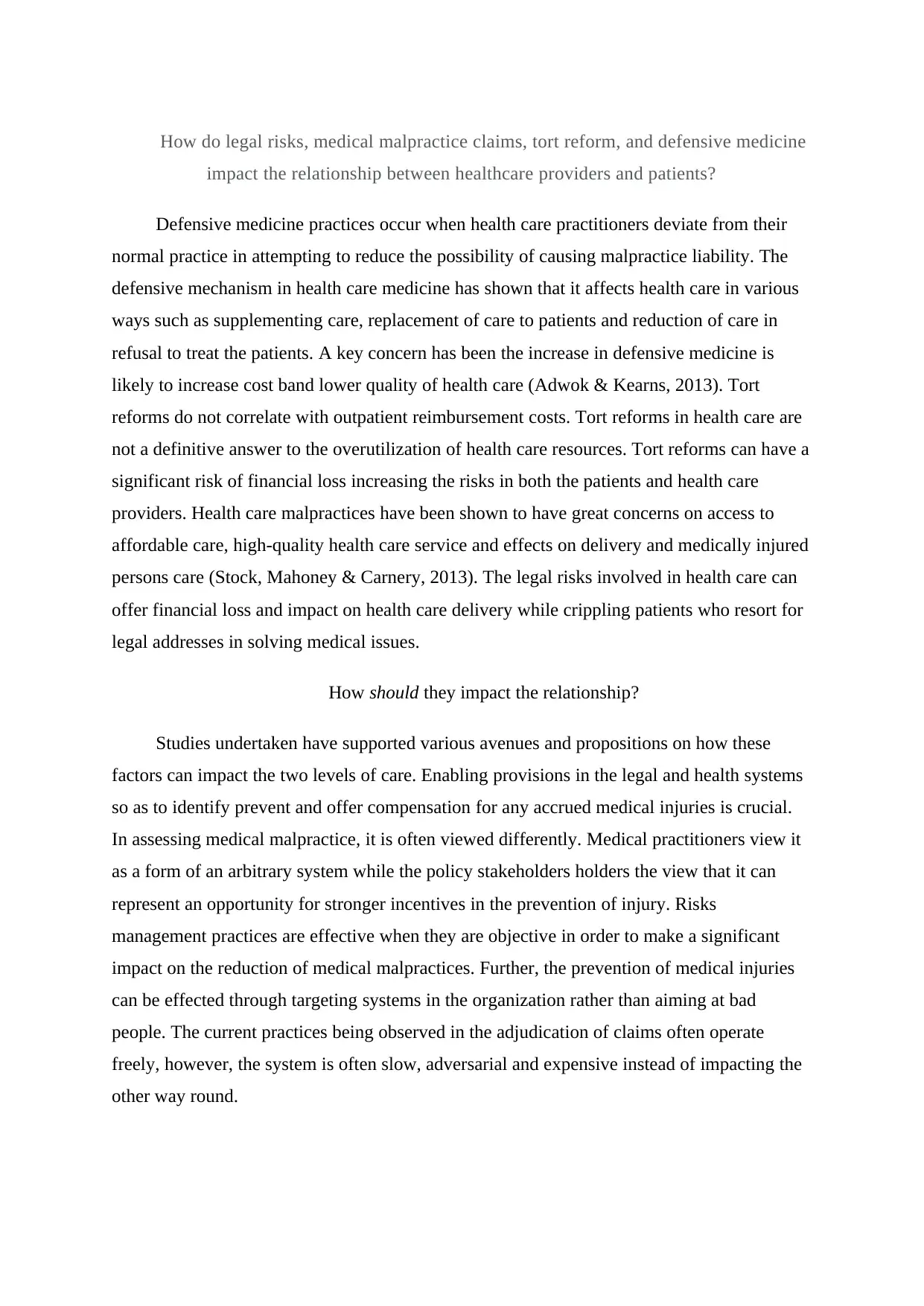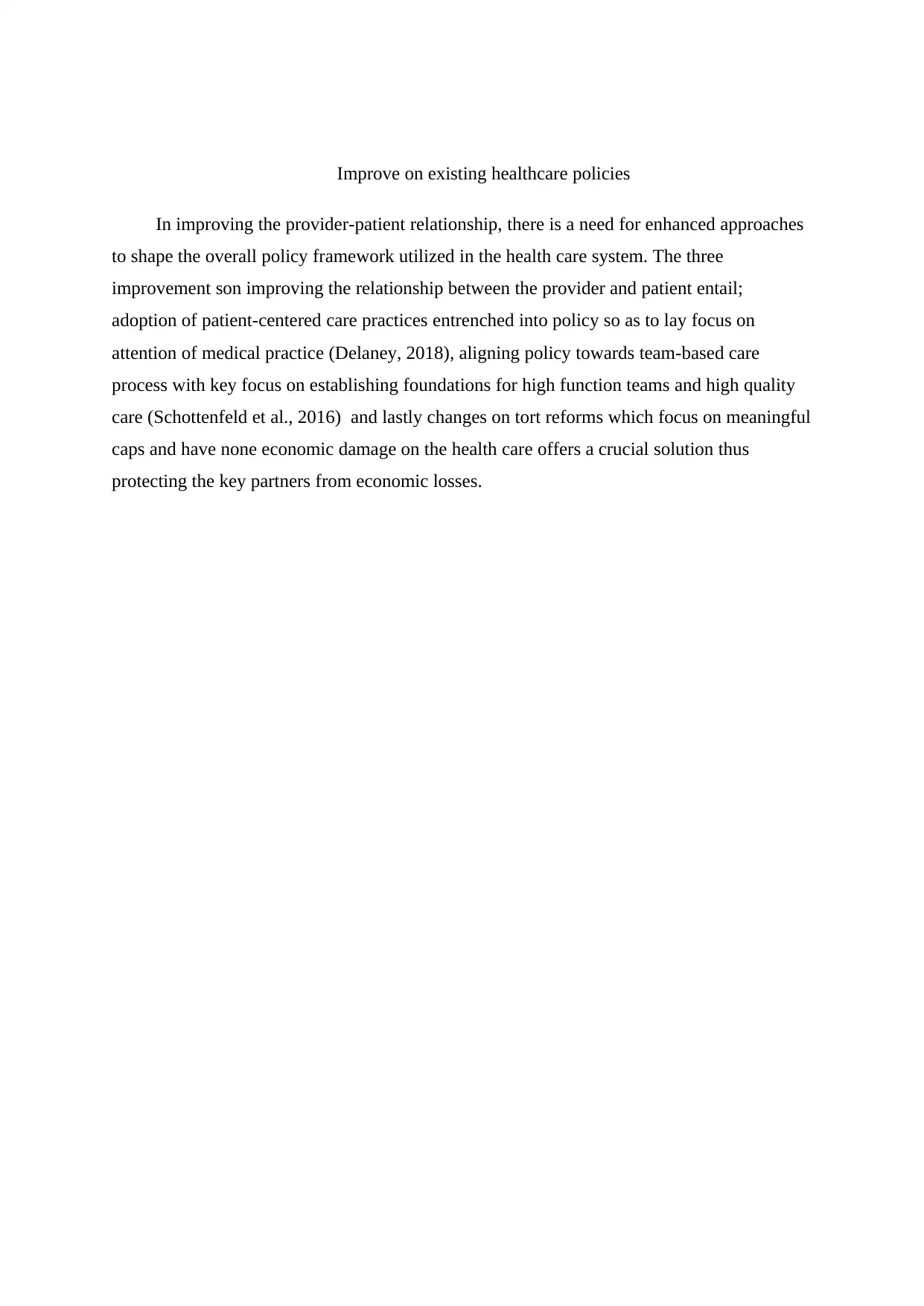Analyzing Legal Risks and Healthcare Policy: Provider-Patient Impact
VerifiedAdded on 2023/04/20
|4
|702
|69
Essay
AI Summary
This essay examines the impact of legal risks, medical malpractice claims, tort reform, and defensive medicine on the relationship between healthcare providers and patients. It explores how defensive medicine, driven by the threat of malpractice, affects healthcare costs and quality. The analysis considers the effects of tort reforms and legal risks on financial losses for both patients and providers. The essay also proposes how these factors should influence the provider-patient relationship, emphasizing the importance of patient-centered care, team-based care, and meaningful tort reform. The essay suggests enhancing policies through patient-centered care practices, aligning policies toward team-based care, and implementing tort reforms that offer economic damage caps to improve the relationship between providers and patients.
1 out of 4











![[object Object]](/_next/static/media/star-bottom.7253800d.svg)